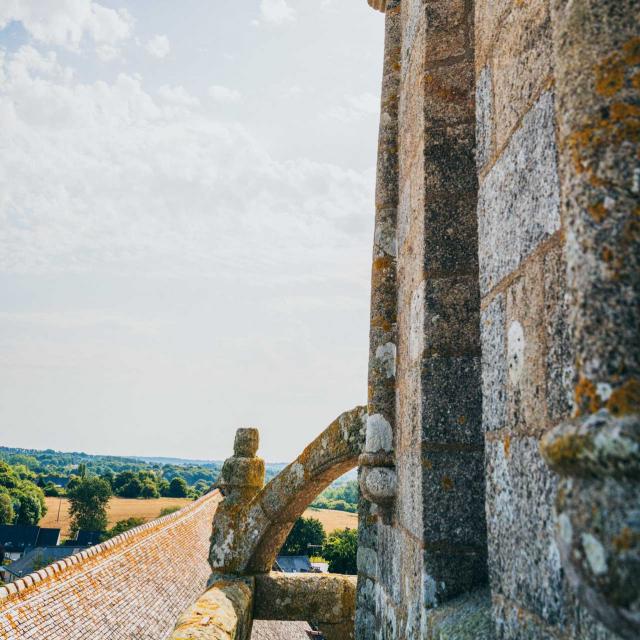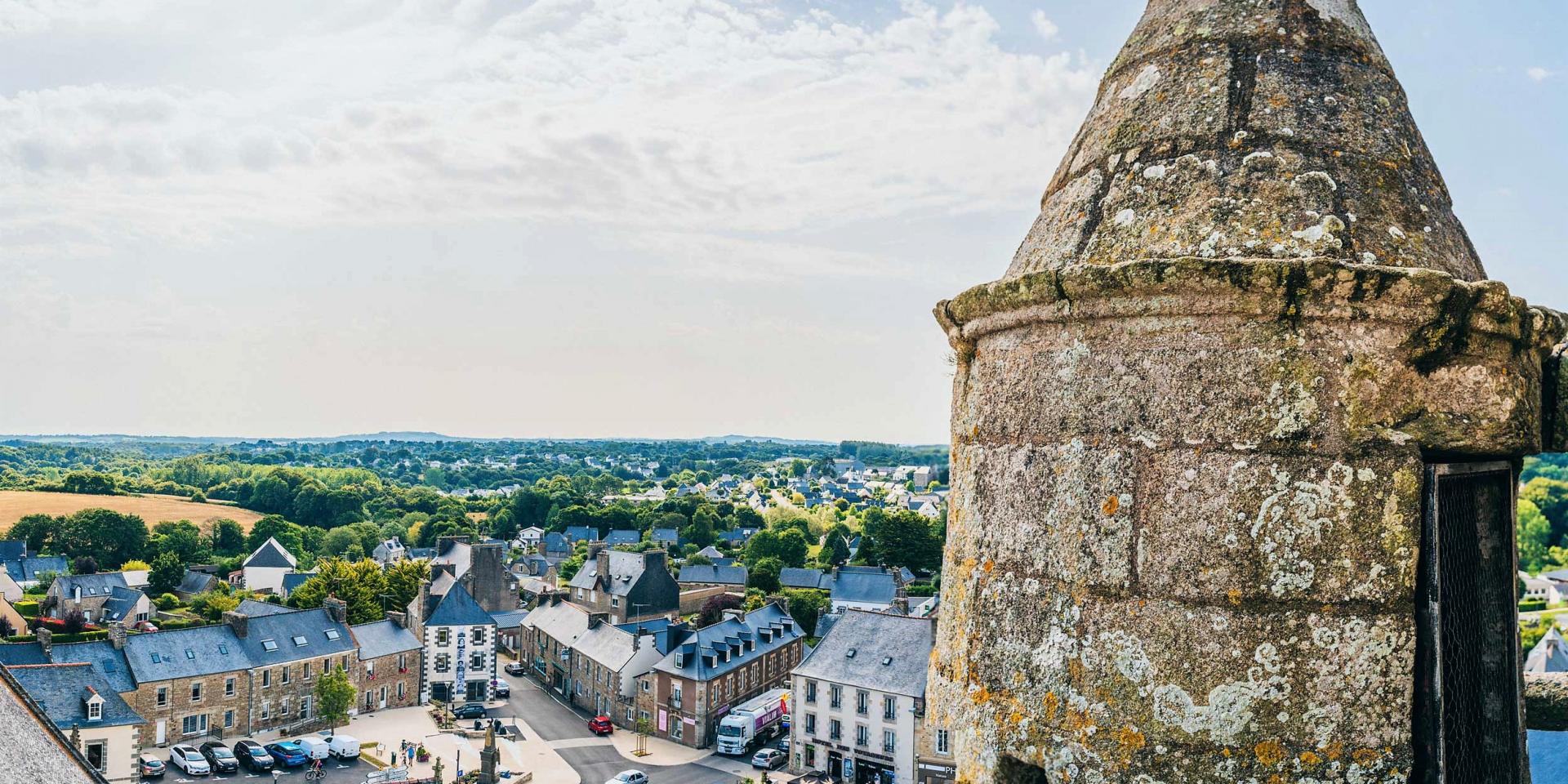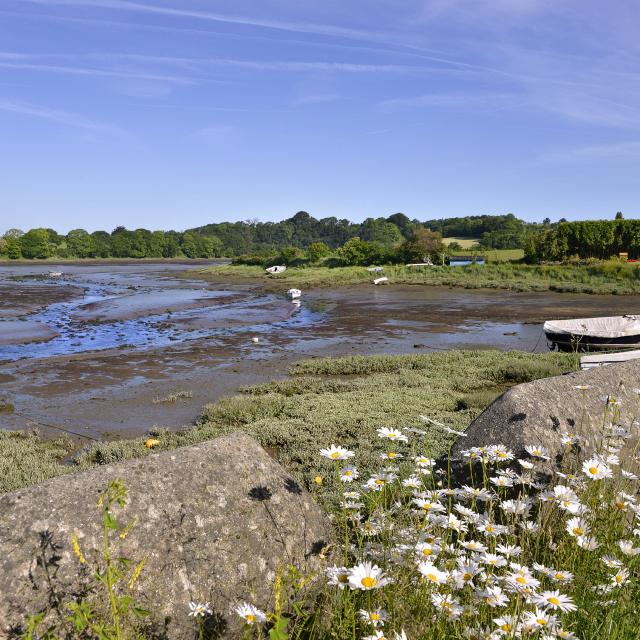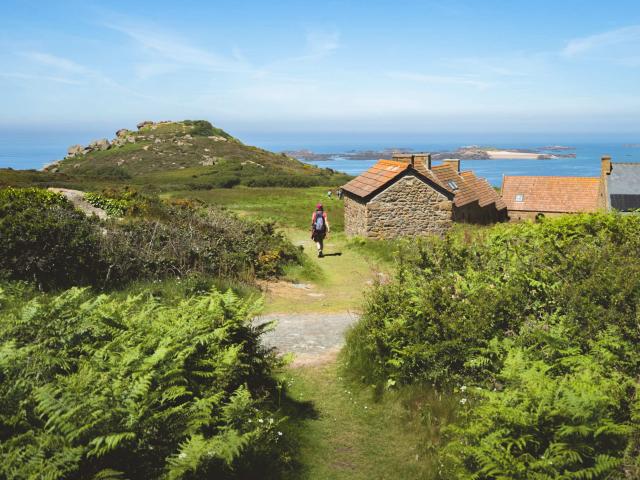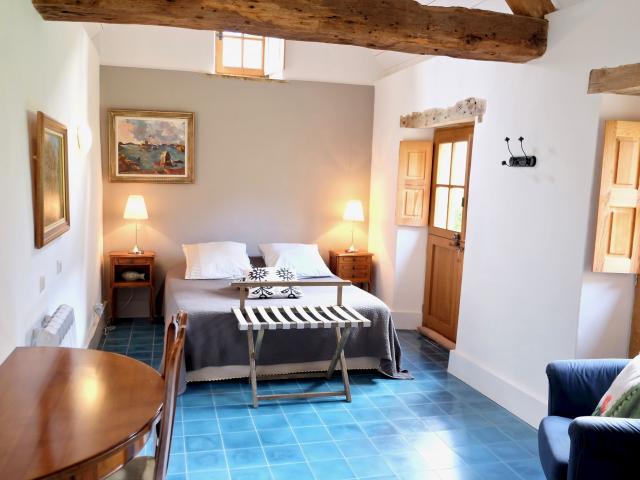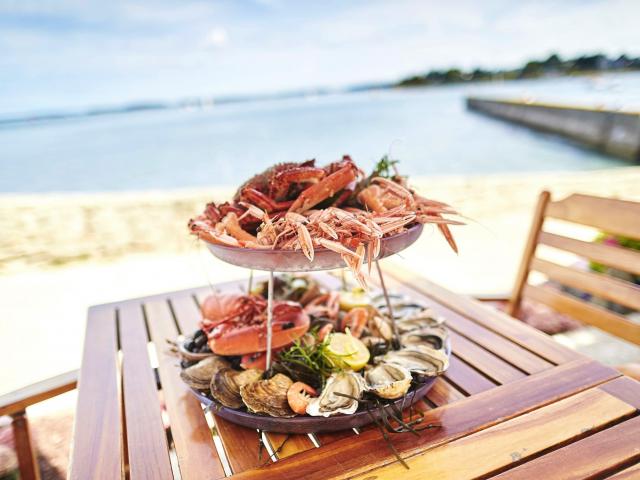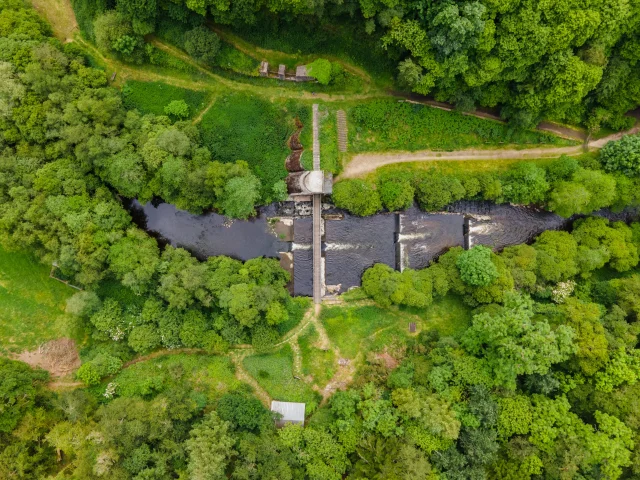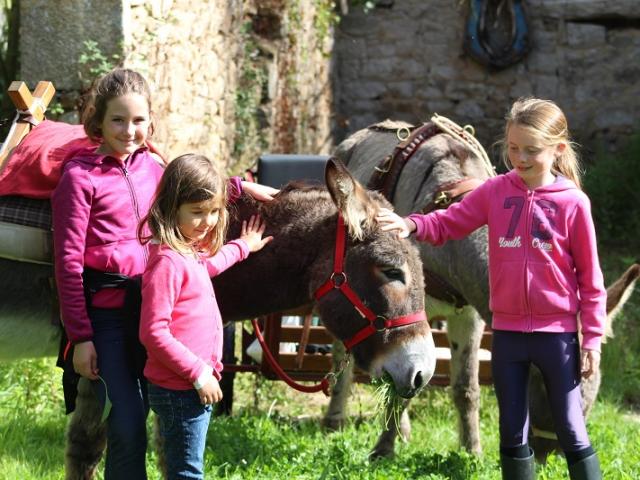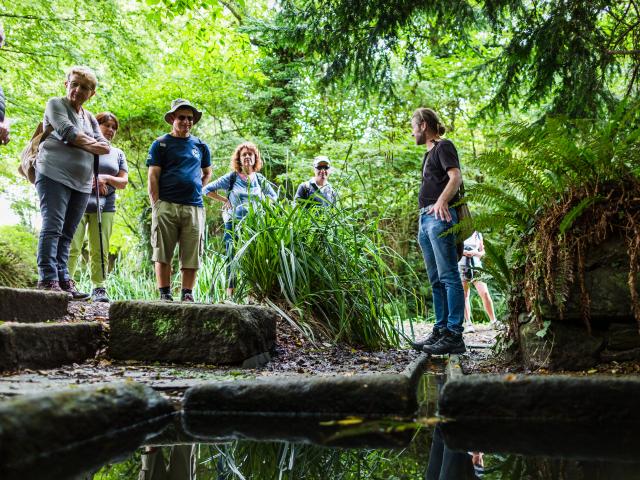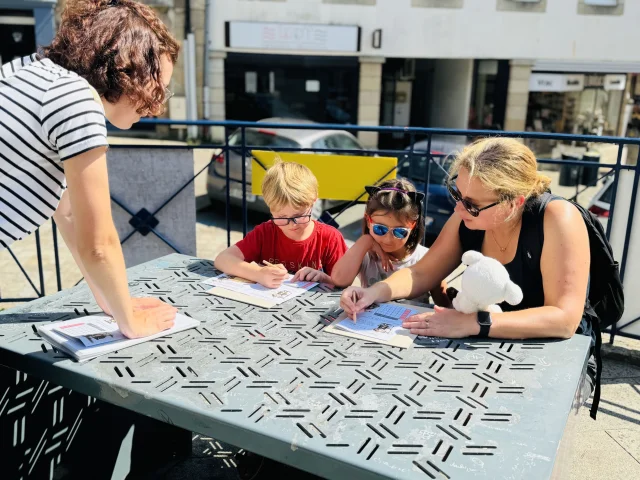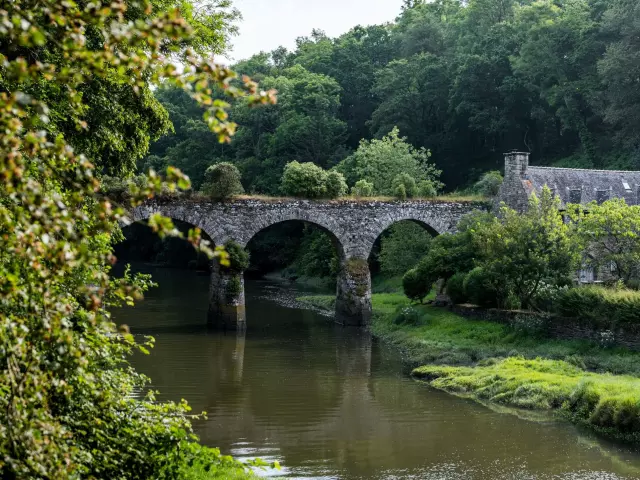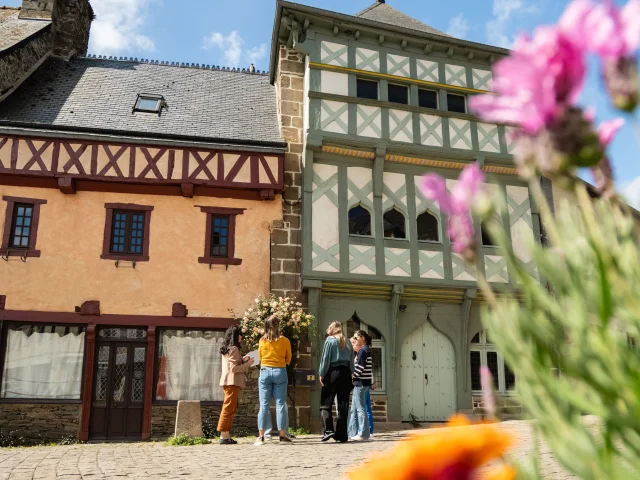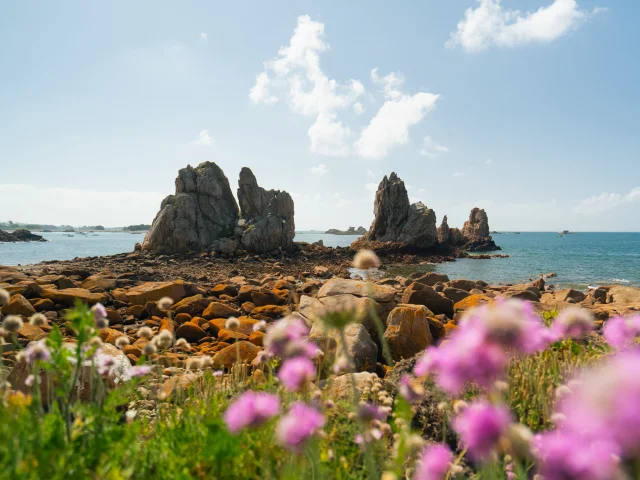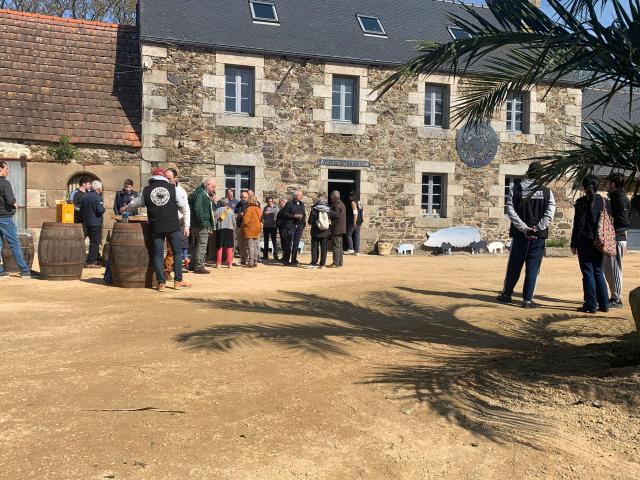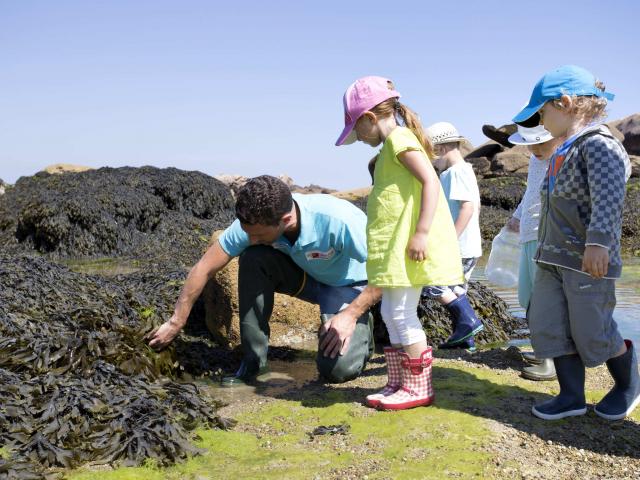Plouaret
Land of manor houses
The commune embarked on this path in 2004 and was awarded the label in 2005 and again in 2013. In the village, the parish church has been a listed monument since 1907. Its heterogeneous architecture bears witness to its centuries-old history. Between 1903 and 1905, the church was restored by Saint-Brieuc architect Jules Morvan, using stones salvaged from the Saint-Maudez chapel.
The statue of the horseman with the anguiped stands proudly at the entrance. The exact location of the find is not known. Initially, the statue was displayed for all to see, near the Saint-Mathieu chapel. In 1887, it was moved to the church square and then to the south porch to protect it from the elements.
It is a monolithic granite sculpture representing the god-rider Jupiter on his horse, trampling a half-human, half-animal female monster whose legs end in a serpent’s tail. Dating from the 2nd and 3rd centuries A.D., it is a remarkable piece of Gallo-Roman cultural heritage in Brittany.
A few metres further down, you can follow the “Au tour de Luzel” interpretation trail, lined with interactive terminals, to plunge into the world of the tales and legends of Brittany collected by François Marie Luzel.
